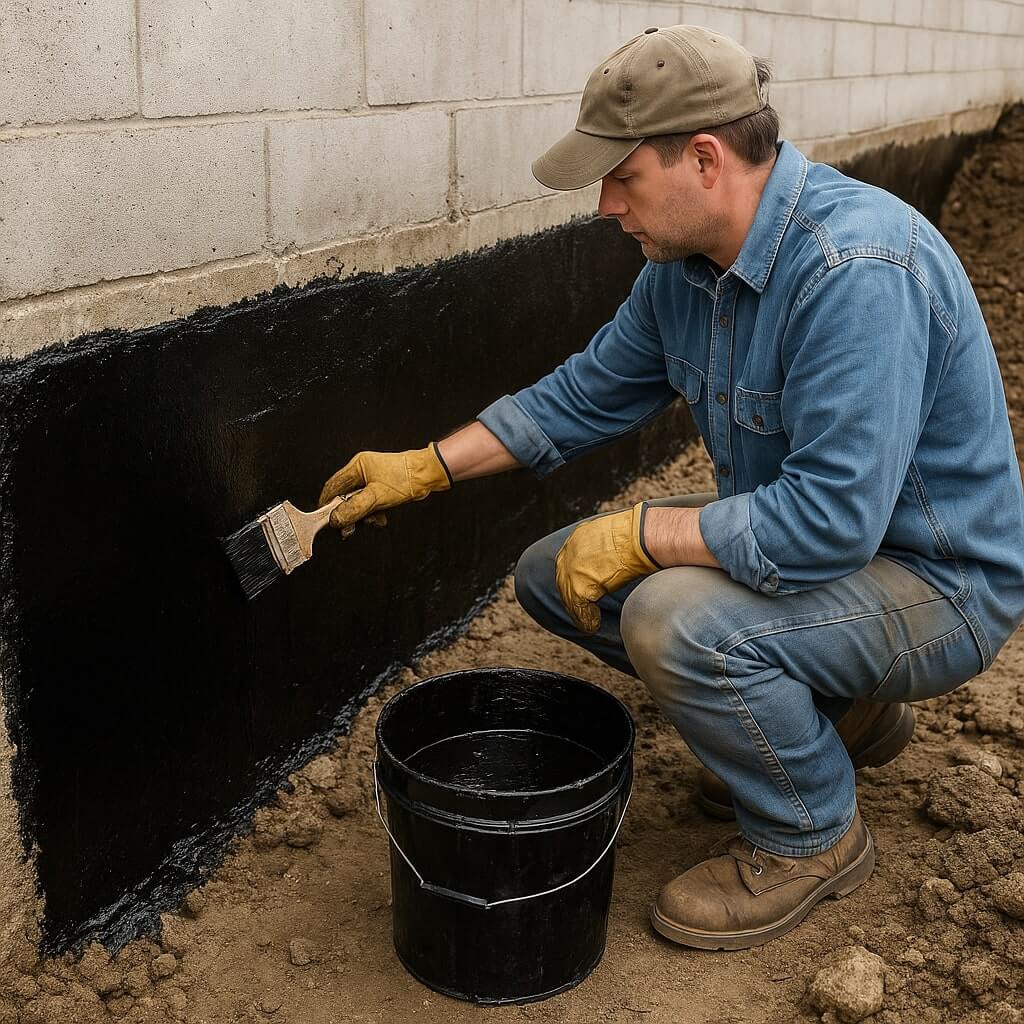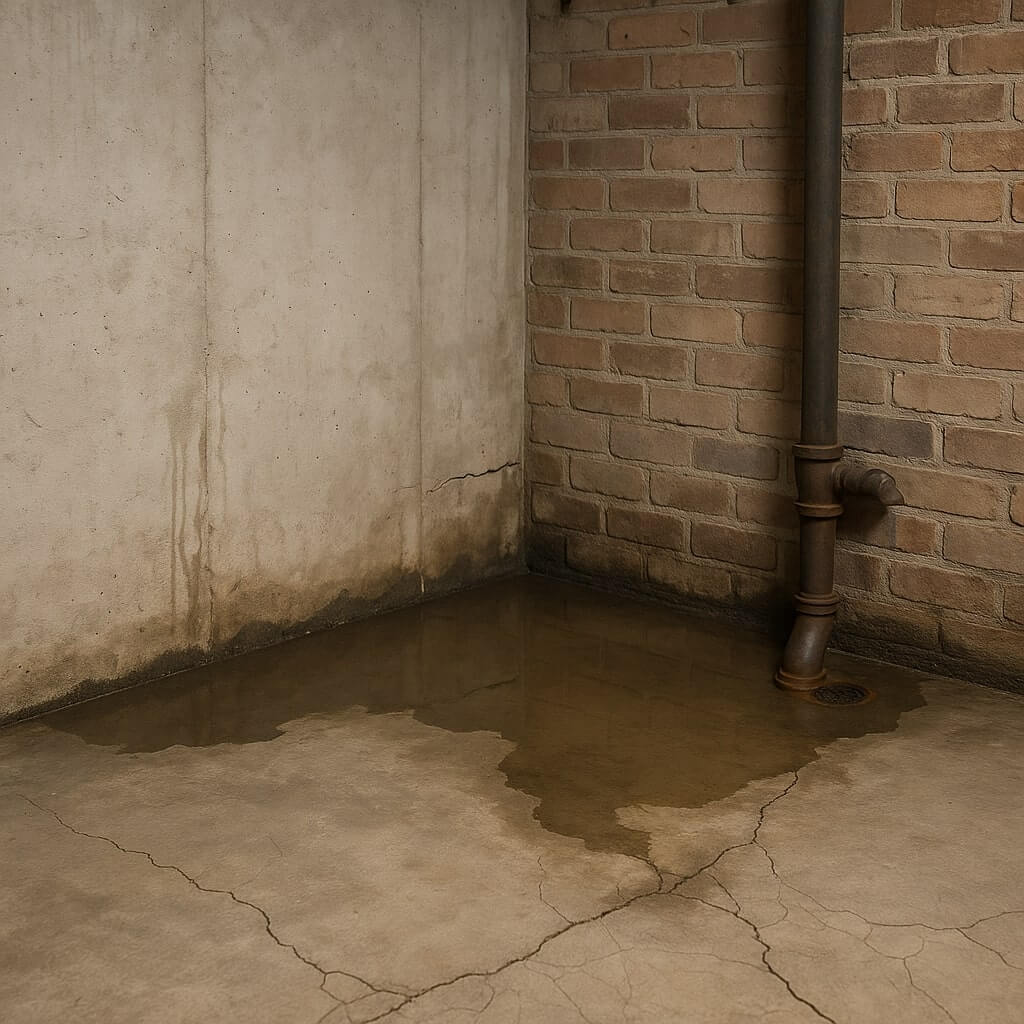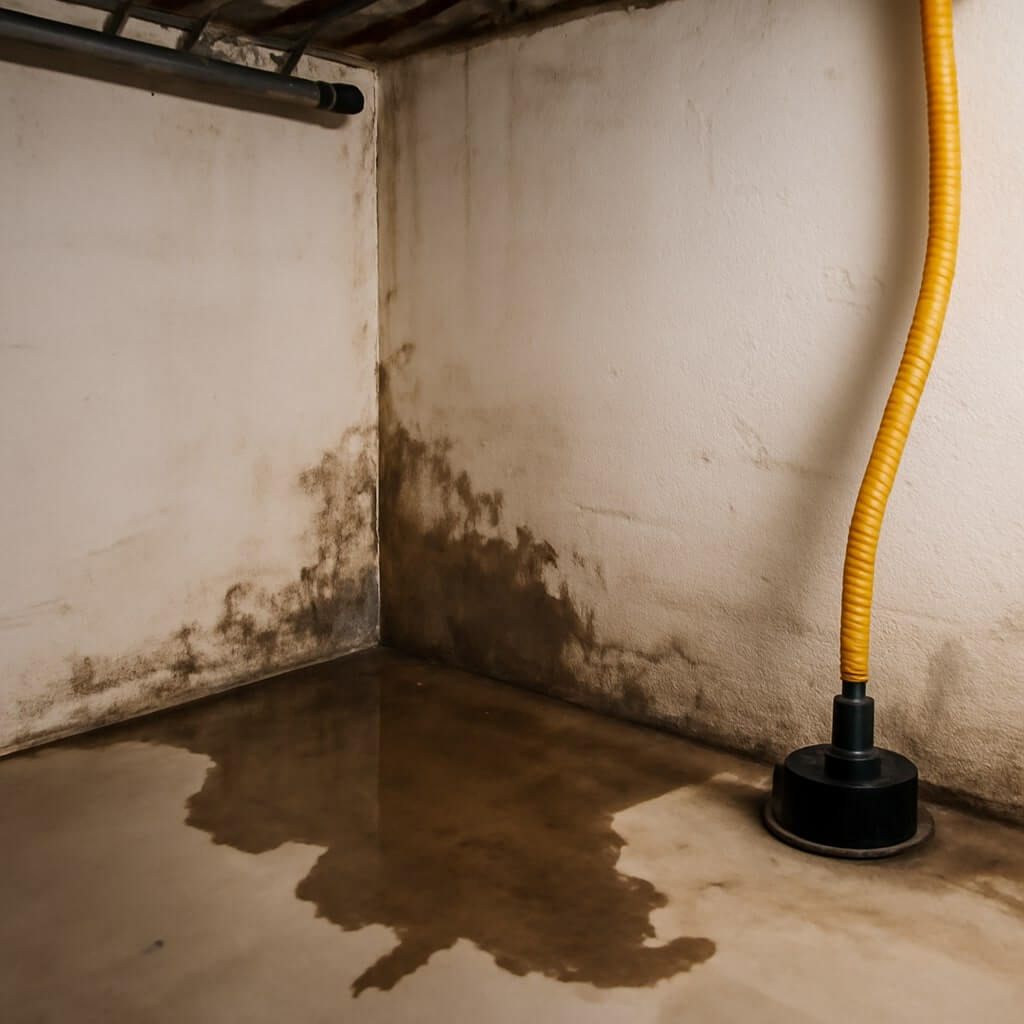When it comes to waterproofing your finished basement, understanding the potential sources of moisture is vital. You’ll want to inspect for cracks, leaks, and ventilation issues that can lead to water intrusion. Once you identify these problems, you can take practical steps to seal gaps and improve drainage. But what specific techniques and products should you consider to guarantee long-lasting protection? Let’s explore those essential tips and techniques to keep your space dry and comfortable.
Key Takeaways
- Inspect and seal cracks and gaps in walls and floors using appropriate sealants to prevent water intrusion.
- Maintain gutters and downspouts to ensure proper water flow away from the foundation and minimize leak risks.
- Install a sump pump in the lowest part of the basement to manage groundwater and prevent flooding.
- Utilize dehumidifiers to keep humidity levels below 60% and reduce the risk of mold growth.
- Conduct regular inspections for plumbing leaks and surface moisture to address issues promptly and enhance waterproofing effectiveness.
Understanding the Sources of Moisture
When it comes to waterproofing a finished basement, understanding the sources of moisture is essential. Common moisture sources include groundwater, rainwater infiltration, and high humidity levels.
If your basement sits below ground level, water can seep through foundation cracks or porous walls. Additionally, inadequate ventilation can lead to rising humidity levels, creating an environment ripe for mold growth.
Be sure to check for plumbing leaks, as they can also contribute to moisture problems. By identifying these sources early, you can take proactive steps to mitigate water issues, ensuring your basement remains dry and comfortable year-round.
Assessing Your Current Waterproofing Measures
Start by inspecting your existing waterproofing barriers, like sealants and membranes, to guarantee they’re intact and effective.
Next, evaluate your drainage systems, checking for clogs or issues that could lead to water accumulation.
This thorough assessment will help you identify weaknesses and areas needing improvement.
Inspect Existing Barriers
Before you plunge into any waterproofing project, it’s essential to thoroughly inspect your existing barriers to determine their effectiveness.
Start by examining barrier materials like sealants, membranes, and coatings for signs of wear, damage, or deterioration. Use inspection techniques such as moisture detection tools, visual checks, and even a simple water test to assess their integrity.
Look for cracks, gaps, or peeling paint that could indicate potential leaks. Document your findings, as this will guide you in deciding whether to repair or replace these barriers, ensuring your finished basement remains safe and dry for years to come.
Evaluate Drainage Systems
After evaluating your existing barriers, the next step is to analyze your drainage systems to confirm they effectively manage water flow around and away from your finished basement. Check for any blockages in gutters and downspouts, and verify they’re directing water away from your foundation. Consider installing French drains or sump pumps if necessary. Here’s a quick overview of common drainage solutions:
| Solution | Pros | Cons |
|---|---|---|
| French Drain | Effective at redirecting water | Requires excavation |
| Sump Pump | Removes water efficiently | Needs electricity |
| Gutter Guards | Prevents debris buildup | May need occasional cleaning |
| Drain Tile | Reduces pressure on walls | Installation cost |
| Dry Wells | Disposes of excess water | Requires space |
Improving Exterior Drainage Solutions
To effectively waterproof your finished basement, improving your exterior drainage solutions is essential.
Start by regularly maintaining your gutters to guarantee they’re free of debris, and consider adjusting the grading around your home to direct water away from the foundation.
Additionally, upgrading your drainage systems can provide further protection against potential water damage.
Gutter Maintenance Practices
While it might be easy to overlook, regular gutter maintenance is essential for improving exterior drainage solutions and protecting your finished basement from water damage.
Start with gutter cleaning; make sure they’re free from leaves and debris to allow proper water flow. Clogged gutters can lead to overflow, directing water toward your foundation.
Additionally, install downspout extensions to direct rainwater at least five feet away from your home. This simple step minimizes water pooling around your basement walls.
Inspect your gutters regularly, especially after storms, to maintain their effectiveness and make certain your basement stays dry and secure.
Grading and Slope Techniques
Proper grading and slope techniques are essential for directing water away from your foundation and protecting your finished basement. Start by ensuring that the ground around your home slopes away at a minimum of 6 inches over the first 10 feet.
Utilize effective landscaping techniques, like planting native vegetation that encourages water absorption. Regularly check for soil compaction; loose soil promotes better drainage. If needed, amend compacted areas with organic materials to enhance absorption.
Consider installing swales or berms to redirect runoff. By implementing these strategies, you can greatly improve your exterior drainage solutions and keep your basement dry.
Drainage System Upgrades
Upgrading your drainage system can make a significant difference in keeping your finished basement dry and functional.
Start by evaluating the drainage system types available, such as French drains or surface drains, to determine what suits your property best.
Next, focus on proper drainage pipe installation; verify pipes are graded correctly to promote water flow away from your home.
Consider adding a sump pump if your area experiences heavy rainfall.
Regular maintenance is key, so check for clogs and confirm all components are in good condition.
These upgrades will enhance your basement’s waterproofing and protect your investment for years to come.
Sealing Cracks and Gaps in Walls and Floors
Cracks and gaps in your basement walls and floors can lead to significant water intrusion, compromising both the structure and comfort of your home.
Cracks and gaps in basement walls and floors can cause serious water intrusion, threatening your home’s structure and comfort.
To prevent this, focus on effective crack sealing and gap filling. Start by inspecting your walls and floors for visible cracks; use a concrete patching compound for larger openings and a flexible sealant for smaller ones.
For gaps, apply a high-quality caulk to create a watertight seal. Make sure surfaces are clean and dry before application.
Regularly check these areas, as maintaining these seals is essential for protecting your basement from moisture and potential damage.
Choosing the Right Waterproofing Products
When it comes to waterproofing your finished basement, selecting the right products is essential for ensuring long-lasting protection against moisture.
Look for sealants and membranes that boast high product durability; they’ll withstand the test of time and provide effective barriers against water.
Don’t forget to check for waterproofing warranties, as they can offer peace of mind and additional protection for your investment.
Research brands with positive reviews and proven track records.
Remember, quality matters—cutting corners on materials can lead to costly repairs down the line.
Choose wisely to keep your basement dry and comfortable for years to come.
Installing a Sump Pump for Excess Water
Even with the best waterproofing products in place, having a sump pump can provide an extra layer of protection against potential water intrusion.
A sump pump adds crucial protection against water intrusion, even with top-notch waterproofing in place.
For sump pump installation, choose a location in the lowest part of your basement, ideally near a drain. Dig a hole, set the pump in place, and connect it to a discharge pipe that leads outside.
After installation, regular sump pump maintenance is essential. Check the pump monthly, verify the float switch operates freely, and clean the sump pit to prevent debris buildup.
This proactive approach will help you effectively manage excess water and protect your finished basement.
Maintaining a Healthy Humidity Level
To maintain a healthy humidity level in your finished basement, it’s important to monitor and control moisture effectively.
Start by investing in a hygrometer to measure humidity levels; aim for 30-50%. If levels exceed this range, consider using a dehumidifier for humidity control.
Additionally, verify your ventilation systems are functioning properly, allowing fresh air circulation. Open windows when weather permits, and use exhaust fans in areas prone to moisture, like laundry rooms.
Regularly check for leaks and confirm gutters direct water away from your foundation. By staying proactive, you can prevent mold growth and keep your basement comfortable.
Conclusion
By addressing moisture sources, enhancing exterior drainage, and sealing cracks, you can effectively waterproof your finished basement. Don’t forget to choose the right products and consider installing a sump pump for added protection. Maintaining a healthy humidity level is key to preventing mold growth. Regularly monitor your waterproofing measures to confirm they’re working effectively. With these tips, you’ll create a dry, comfortable space that stands the test of time. Your basement can be a valuable asset with the right care!




